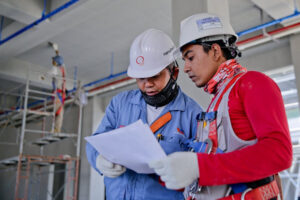
We’re here to clear up all of the confusion revolving around ground penetrating radar by answering some questions that can get brought up every now and then.
The limits of ground penetrating radar (GPR) are not well known by everyone. It’s not a tool that everyone has to use on a regular basis, so it’s bound to be shrouded in mystery. We’re here to clear up all of the confusion revolving around ground penetrating radar by answering some questions that can get brought up every now and then.
How Far is Ground Penetrating Radar Able to Penetrate?
This answer is multi-layered. This question can be fairly complex and difficult to answer because the depth penetration of GPR is determined by the kind of radar frequency and the current soil conditions. Clay and moisture seem to be some of the biggest obstacles for radar clarity, as well as depth penetration. That said, you might still be able to use GPR even if these variables are present on the worksite. The problem comes with the number of detectable utilities. The reality is that you’ll never know for sure what your achievable depth penetration will be until you get your soil scanned. If you are using ground penetrating radar scans done for your underground utilities, ask whoever your GPR operator is about what depth penetration they’re getting from the radar. Also, ask them what other methods they are using to help them find the utilities.
How Long Does Ground Penetrating Radar Take to Find Utilities?
GPR data will usually be processed and interpreted using real time, with the exception being when 3D scans are being done. All of the data gets displayed within a cross-section view of the substrate, meaning that any detectable utilities will be found incredibly quickly, assuming that you know the general area in which the utilities are located.
Can Ground Penetrating Radar Find Out What Kinds of Utilities are Being Detected?
GPR is sometimes able to determine which utilities are being detected. Different utilities will reflect radar signals in different ways. How the signal gets deflected can give you a general idea of the material from which each utility is made. Usually, the line will have to get traced back to the source if you want to determine the type of utility.
Concrete Visions Will Get The Job Done Right
Concrete Visions has been working with clients for over 25 years. Our G&M Services installers are certified with the industry’s major firestop product manufacturers. As part of our firestop service, we can assess abnormal field conditions and, with the manufacturer’s technical support assistance, provide engineering judgments in a timely fashion to comply with contract specifications. Our Field Mechanics undergo ongoing training, including mandatory monthly safety meetings, weekly Toolbox Talks where safety and equipment information is shred, and trainings on safe work standards and safety best practices.
